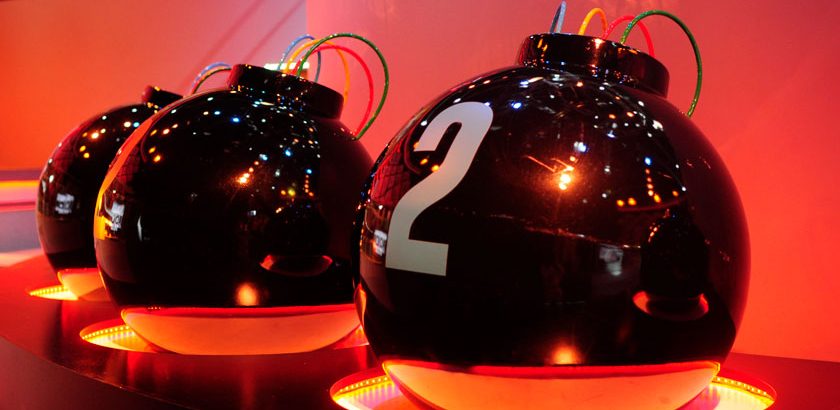Gestmusic, leading production company has revolutionized last decades Spanish television with hits like Operación Triunfo, Crónicas Marcianas, Tu Cara Me Suena or Boom!, has appointed Grass Valley and Crosspoint to upgrade their technolgy to HD.
Gestmusic is the production company responsible of some of the programs have changed Spanish television paradigm. Operación Triunfo, Crónicas Marcianas, Tu Cara Me Suena or ¡Boom! (which delivered the largest prize in the history of television in Spain: 2,300,000 Euros) are just a handful of examples. These formats have not only been a success in Spain but have also been exported to countries all over the world. In fact, Gestmusic is currently filming programmes for Italy in their studios.
Their facilities at Sant Just Desvern regularly houses up to three sets covered by the same technical equipment. The sets for ¡Boom! and ¡Ahora Caigo! are currently assembled there. Although this may not be known to many, Gestmusic is also committed to training and creating new professionals in the audio-visual sector, offering training and internship contracts in very demanding real-world environments. This year, Gestmusic has taken another step forward by incorporating HD production by the hand of Crosspoint, among others, and equipment made by Grass Valley. We visited Gestmusic’s studios to talk to Pere Prat and Jordi Puigcorbé, Technical Director and Technical Chief of Television Sets, respectively, who have revealed the ins and outs of this project.
Did the production of the new material coincide with a change of season?
Pere: Not exactly, but our production department did invest significant effort to speed up the filming and thus find the perfect moment to make the change.
Jordi: We did it in two phases because implementing everything at the same time would have involved bringing the filming to a standstill for too long, not to mention the risk involved. First, we addressed the implementation of the new filming system, with the implementation of the new Nvision matrix. In this phase, we verified that all the capturing, as well as the flow of files from the TV set to post-production, worked just as expected. In the second phase, we changed the camera systems, mixers, multi-screens, etc. The result has been outstanding thanks to the good planning and involvement of the team.
Has HD entailed any operational changes?
Pere: We have had to pay more attention to some specific issues such as the Moiré effect, always related to nuances, with some apprehension at first but it ended up not being a problem.
Jordi: Besides the obvious technological and quality leap, we have hardly noticed anything different. If we had to highlight one, I would say that we have had to pay more attention to some specific elements, like the Moiré effect. It has disappeared from some screens and appeared on others with more resolution. In the side screens of ¡Ahora Caigo! there was a Moiré that has virtually ceased to exist now, but has appeared on the central 6 mm screen, an element that the production team has overcome by changing some of the shoots to achieve a higher soft focus of the background. We refer to nuances that are solved quickly and effectively, as we have not encountered any major difficulty in this respect.
Why did you choose Grass Valley?
Jordi: We had been toying with several options for quite some time, and Grass Valley was not always our first choice. Let’s say we were considering several solutions, but ended up choosing Grass Valley for their cameras.
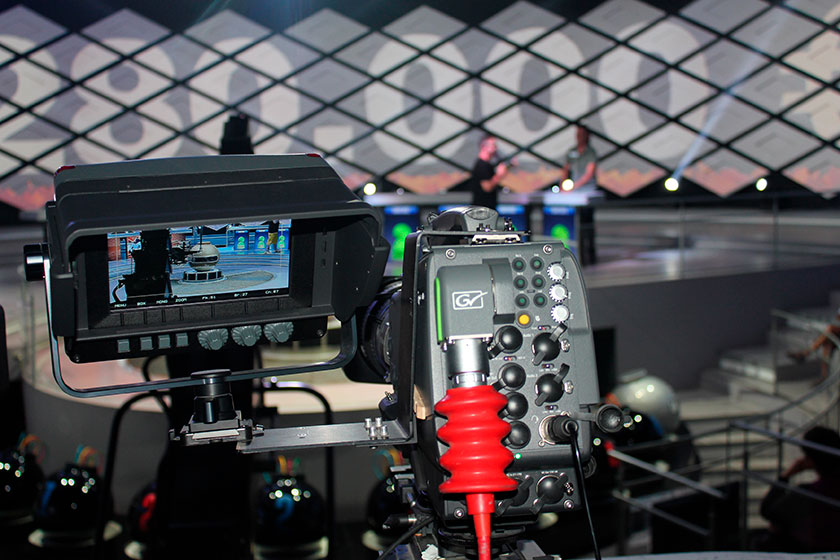
Pere: We had worked with Grass Valley before, in programmes like “Tu Cara Me Suena” and were very satisfied with the optimum results obtained. Another key element was the remote panel for CCU. It is a panel with a very ergonomic usage that turns out being very efficient and versatile for the image control technician. The few changes undergone by this panel over time evidence its qualities. Working with it was so easy and it performed to perfection in programmes that demand very fast and radical situation changes. You can move from a scene where you are emulating the 40s with sepia tones to another completely different one, with exceptional changes in colour temperature, filters and the like, very swiftly. This quality aroused great interest.
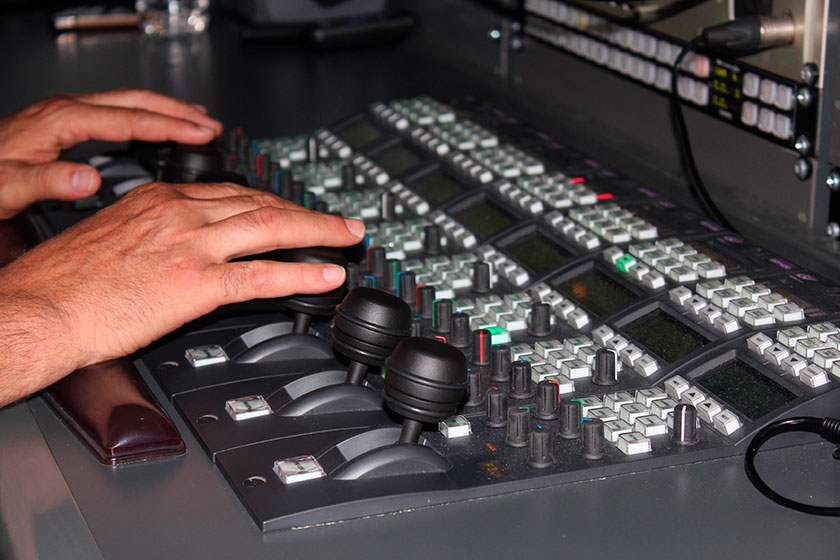
Jordi: Another important aspect that concerned us was the integration of all the different pieces of equipment. This was something Grass Valley offered us natively, because what is important at the end of the day is that all the devices speak to each other. When you are devoted to seeking the best possible equipment for each need and end up with a facility composed of devices made by 20 different manufacturers, you may run the risk of encountering severe problems to integrate them. Grass Valley covered everything we wanted to do. Most of the equipment is theirs, so integration is absolute.
Pere: As regards cameras, there was one thing we liked a lot about Grass Valley and that was scalability, for its performance. With cameras, you acquire equipment susceptible of being updated, thanks to a licensing system. So, the day you need to produce progressively, when you need to increase camera performance, you can do so without having to change model. This is a great advantage. I think this was one of the strongest points when taking a decision concerning cameras. On the other hand, one of the reasons behind choosing the Prémier series was the second filter wheel it incorporates, because we needed a minimum level of effects on the camera due to the type of production we do.
Jordi: Another important aspect was the integration of all the different pieces of equipment. This was something Grass Valley offered us natively, and it was of special concern, because at the end of the day, they should all speak to each other. When you are devoted to seeking the best possible equipment for each need and end up with a facility made by 20 different manufacturers, you may run the risk of encountering severe problems to integrate everything. Grass Valley covered everything we wanted to do. All of the equipment is theirs, so they work seamlessly between them.
Another positive point was the possibilities that Grass Valley offered to carry the signal via triax from the cameras. Fibre optics is good, but we work in the studio with short distances, our TV set is cabled up via triax and to change it all to fibre optics entailed quite a high cost. Not to mention that nowadays -and for us-, it is much easier and faster to repair a triax compared to fibre optics.
What about audio?
Jordi: We overcame the audio topic with MADI. The mixing console delivers MADI and we distribute it to the recorders and the multi-screen. This was something we loved because it enables you to monitor up to 64 audio tracks easily. Now that we have implemented everything, we have realised that perhaps we should have integrated a hybrid matrix. In other words, take the MADI directly to the matrix, instead of taking it to the recorder to then embed, de-embed and route with the video signal. Grass Valley’s Nvision matrix also offered us that possibility, but we hesitated because everything would have had to depend on one piece of equipment, even though it did entail more versatility. I’m sure we will address this in future.
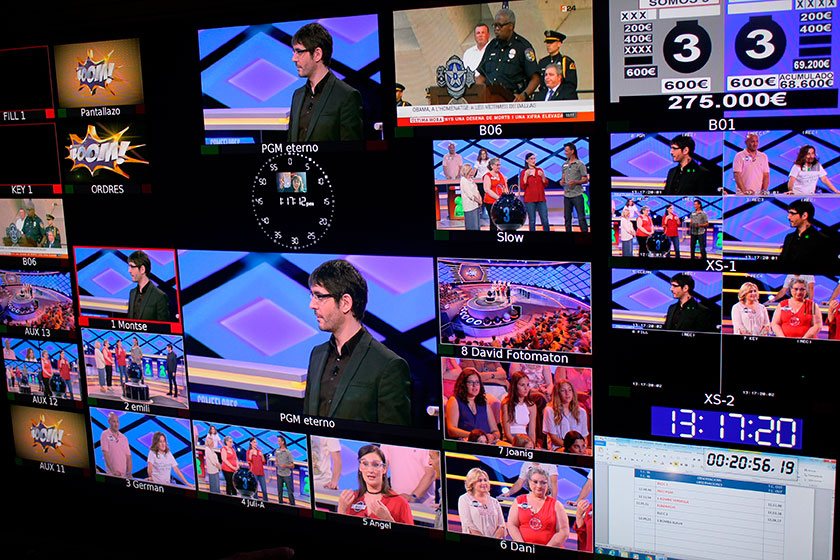
Why Crosspoint?
Pere: It’s easy to summarise: if we had to perform the project now with all we have learnt, we would choose Crosspoint again without a doubt. The service and availability they have proven to have with the little time available and the criticality of the facility have been essential for everything to come to fruition. It is paramount to know who is supporting you and how fast they can respond. Different needs or problems can arise at any time at Gestmusic, even during weekends, and we need to have the reassurance that there is support when we need it. Crosspoint’s work has been simply impeccable.
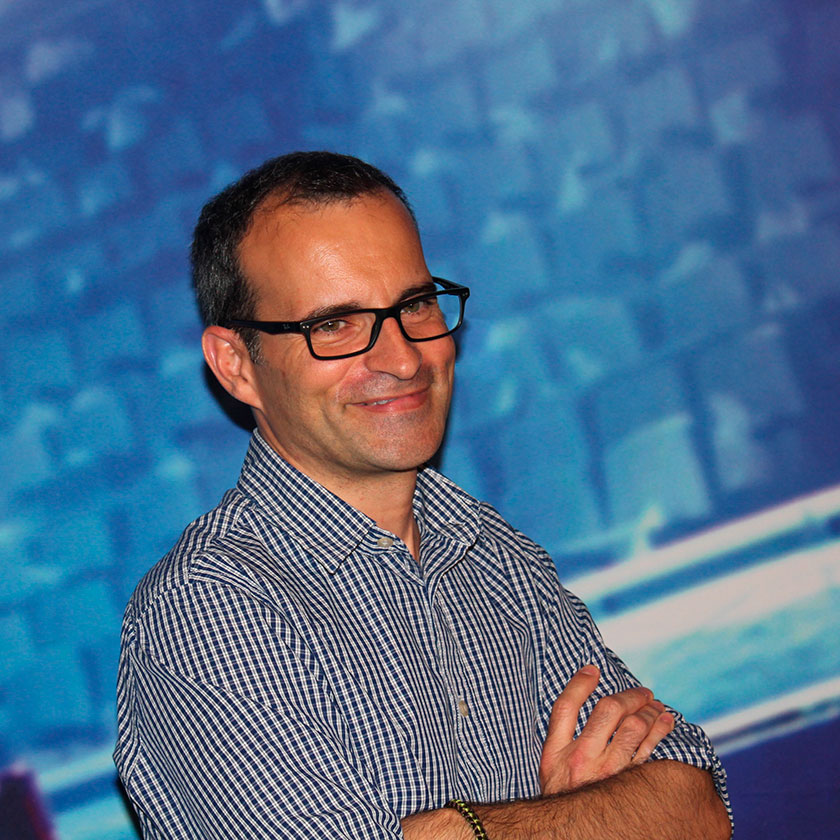
Pere Prat: “if we had to perform the project now with all we have learnt, we would choose Crosspoint again without a doubt. […]. Crosspoint’s work has been simply impeccable”.
Jordi: We are a small team and we have had to balance filming on a TV set with its implementation. Having a flawless customer care team that solved any problem immediately has been very helpful during our training process. We are speaking of teams with whom we had not worked before, even within the same brand, because Grass Valley’s old products have nothing to do with the current ones. In other words, it was not about working with an integrator from whom you ask a solution, he designs it, integrates it, implements it and you have it all up and running.
Pere: We have been doing our own engineering for quite some time now. It gives us with great added value because it forces us to be up-to-date and offers a good knowledge level which enables us to adapt the equipment and flows necessary to perform the production efficiently. We value being able to adapt the facility to our real needs positively.
Is having two operational TV sets working simultaneously a good formula?
Pere: Indeed, because it enables us to optimise resources. Nowadays, productions have tight budgets and working in one studio is surprisingly practical at all levels, even logistically-speaking. It is all centralised, both in terms of internal and external resources that may be needed, like audience, for instance. Having one single space to manage, makes everything so much simpler.
Jordi: We have a mobile unit far from standard. It is not a vehicle designed to provide service to external clients attending any type of event. This unit has been conceived as a studio on wheels, purposely designed for our needs and the productions we do here. It has several particularities such as spacious work areas, with special attention to audio, because one of Gestmusic’s strongest points is musical formats.
It is all about making the most of the advantages of a studio with the versatility and mobility of a mobile unit.
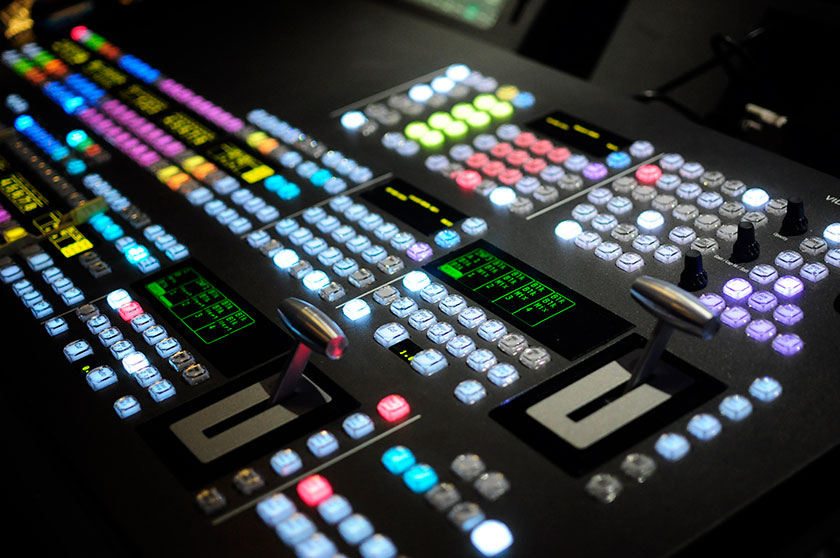
Pere: We can say that it is the ideal technique tailored to us. We do not have a replay system with slow motion, for example, and this type of equipment would have a more multi-purpose mobile unit to provide services. Our unit is equipped with 8 cameras but can cater for up to 10. We have a mixer with 3 M/E and two EVS XS3 servers with 8 channels each, for filming and playback. It is a solution that enables us to film on more channels if necessary, but it also means a secure configuration with a backup functionality. The idea is that if we lose one server, it is not a big deal, our production will not stop.
Jordi: In fact, one piece of equipment would fulfil our filming needs, albeit with limitations, but it could be done. We are practically a contents factory, so we can simply not stop. We must bear in mind that a programme brings together a lot of people. For ¡Ahora Caigo!, for instance, there are 10 participants, plus the audience, plus the production team. This is why we have given our facilities so much thought, with the objective of continuing forward no matter what, even despite unforeseen problems.
What has changed with all this?
Jordi: In our case, we have been able to combine filming with post-production. Keeping the TV set and post-production separate has always been a handicap, because, the bandwidth came with a very high cost.
We have managed to exchange the appropriate material in both directions in a very swift manner and have all the production generated on the TV set in post-production by the next day at the very latest.
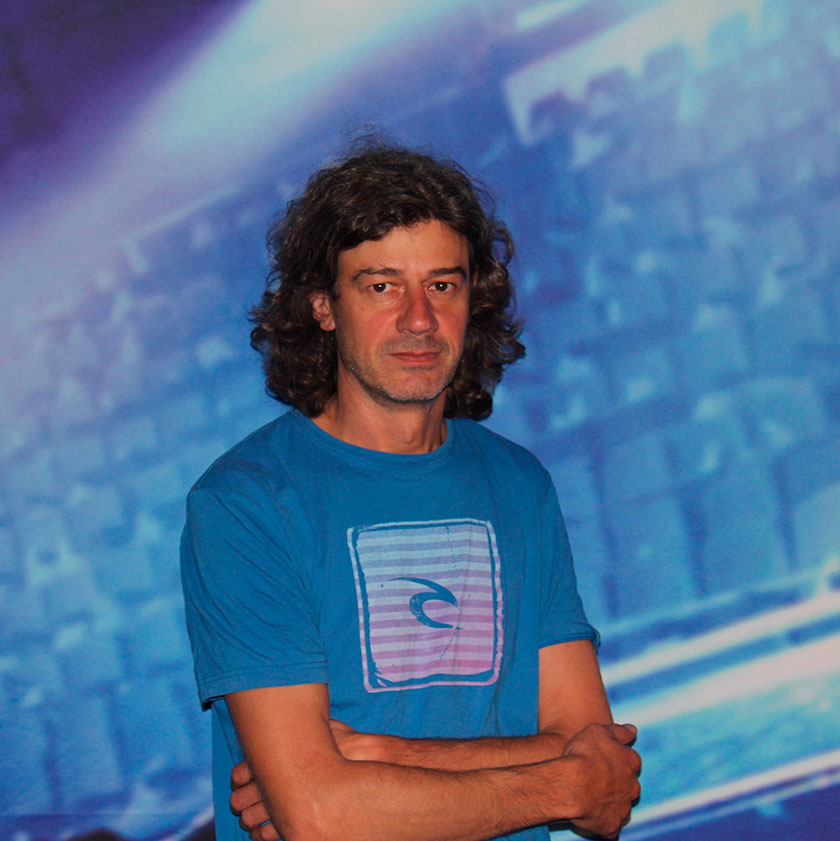
Jordi Puigcorbé: “The result has been outstanding thanks to the good planning and involvement of the team”
Pere: We have improved how production works and reduced the delivery times of the productions considerably. In the past, when a programme finished, it took some time in being delivered to the television broadcaster, because the programme had to be delivered physically, either on a hard disk or tape. This time has become so much shorter because it is all done electronically now.
Jordi: Sometimes we need to make changes to a particular part of the programme, for instance, to include advertising or simply modify the duration to adjust it to the schedule. Being able to work on digital format provides the flexibility necessary to perform whichever modification after the programme has been filmed.
Pere: Nowadays, we need to be ready to make any change in a programme until soon before its broadcast. To this end, we have dimensioned server systems to accommodate between 30 and 40 programmes, including raw material, which are replicated both in the study and in post-production. This equipment synchronises automatically through fibre optic connections. This offers swiftness, but also redundancy of contents, or, in other words, security. Thanks to this flow, we have been able to reduce costs at all levels and gained reliability and above all, flexibility.
DELIVERY Cameras 8x LDX 80 Première 8x Adaptadores Triax 8x Visores LCD 7” 2x Visores oculares LCD 2,7” 8x Estaciones base XCU Triax 8x Paneles OCP 400 1x Panel Master MCP 450 Mixer 1x Karrera S-series con 3 M/E, 32 entradas y 16 salidas 4 keyers por M/E 2 iDPMs flotantes 2 Chromakeyers flotantes Panel de control con pantalla táctil Imagestore y multipantalla Router 1x NV8144 72x72 3G/HD/SD con Redundancia de CPU, PSU, XPOINT y controladora NV920 Puntos de cruce híbridos 6x paneles multimodo NV9605 2x paneles avanzados LCD NV9642 Multiview 4K 1x KMX-32x1-4K (32 entradas y 1 salida 4K) 1x KALEIDO-MX-24x2
Interview courtesy of TM Broadcast

